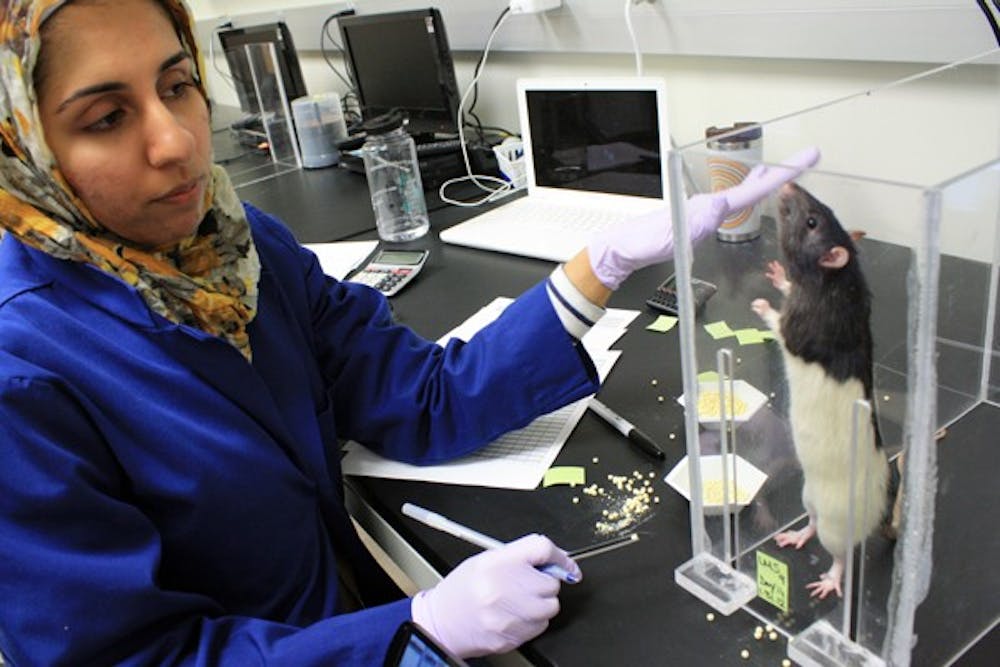An ASU professor has enlisted the help of rats in his research to cure Parkinson’s disease and to treat stroke patients.
Associate professor and neuroscientist Jeffrey Kleim and his group of student researchers use rats as experimental models to find a treatment for patients with Parkinson’s disease or stroke.
“We take young, healthy rats and give them Parkinson’s disease,” Kleim said.
His research team is creating a rat with the same symptoms a Parkinson’s disease or stroke patient would have, Kleim said.
The research team currently has a rat that displays the symptoms of a stroke, but they are working toward finding a rat that exhibits symptoms of Parkinson’s, he said.
His job is to come up with ways for a rat to have the symptoms a human would have, Kleim said.
Parkinson’s disease is a neurological disorder that affects a person’s physical movements, such the inability to control hand movements.
The team needs to give a rat the symptoms of Parkinson’s disease that a human would normally have before exploring treatments or a cure, he said.
He said the researchers are under strict rules under ASU and the Association for Assessment and Accreditation of Laboratory Care International to care for the rats, such as giving the rats anesthesia before brain surgery.
Zuha Warraich, a neuroscience graduate student, trains the healthy rats before they are given the experimental stroke.
Warraich places the rat in a plastic cage with two open slits where the rat is trained to reach for a food pellet, called the single pellet test.
She places a small food pellet at the opening, and the rat extends its paw to reach it.
Warraich said a healthy rat would be able to extend its paw to reach the pellet, whereas an experimental stroke rat will not.
Stroke rats are not able to extend their paw and they hold their paw closer to body like a stroke patient, she said.
“This is good,” Warraich said. “It tells us our stroke model is mimicking human condition.”
The tests help the researchers look at the impairments caused by the stroke, Warraich said.
She said they record everything from the rat’s weight to the amount of food they receive to have accurate data.
Warraich videotapes the entire single pellet test training, and the other research assistants examine the rat’s paw movements.
Biomedical freshman Alexis Arnold works on the Parkinson’s disease rats.
She holds a clicker in her hand and reviews the rat’s paw movement on video in slow motion.
Arnold also works on training the rats for the single pellet test.
Nagheme Thomas, the lab manager, has worked with Kleim and the rats for nine years.
She said she gets excited every time a new batch of rats comes into the lab.
Thomas said she recalls one rat that grew attached to the scientists and would want to “cuddle” with the trainers.
“I swear they have personalities,” Thomas said. “I personally like to compare them to people. Some people require more focus, and some don’t.”
Trainers have to keep the rats engaged and focused, Thomas said.
“Even if it’s a small portion that we do, I like knowing what we do will lead to a cure,” Thomas said.
Reach the reporter at thaniab@asu.edu
Click here to subscribe to the daily State Press newsletter.





